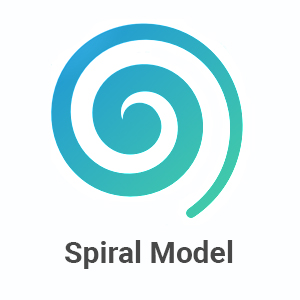


Software development lifecycle (SDLC) produces the software in low cost with high quality. One of the flexible models in SDLC is Spiral Model. In this blog we are going to see the detailed information about what Spiral model is and how it works with its architecture diagram.
The spiral model was described by Barry Boehm in 1986 is a combination of iterative development method and sequential improvement model. Spiral model is a risk driven process model which means the overall project’s success depends on the risk analysis phase. The spiral model is one of the oldest types of software development lifecycle (SDLC), where the development process is carried out, incrementally and iteratively in a systematic and speedy way.
Fig. Architecture diagram of Spiral Model
This architecture diagram will help you to know the steps performed in a simpler term in Spiral Model. Spiral Model goes through the planning, design, build and test phases over and over with gradual improvements in each phase. Spiral model consists of four different phases. These phases are:
A software project repeatedly passes through these phases in iterations called Spirals. These phases are explained as follows.
This phase includes the planning process, tasks, resource defining, team planning, timelines and gathering of other project related information. Planning phase includes the estimating costs, schedule for iteration. Once the planning finalizes the team proceed to the next step i.e., Risk Analysis.
In Risk Analysis phase, the project prototype is put up for the solution. All the planning which is being planned in planning phase is proceed with the risk analysis phase to overcome the problems and risks at the beginning stage of project development. Technical and management risk are the factors that include in the risk analysis phase.
In this phase, the execution part is being done by engineers and developers. The planning and risk analysis once finalized is being proceed in the execution phase where all the coding, testing and deploying of software takes place.
In evaluation phase, the product is being assessed by the client and provided with the revert if any changes required from client side. Evaluation phase includes all the above phases whether it is about planning, risk analysis, engineering & execution the client goes through each phase for evaluating the product or software.
There are some drawbacks which spiral model consists of:
The examples of spiral model are that Microsoft used it to develop early versions of Windows. The Gantt chart software was also made using spiral model. Game development is another industry who uses spiral model to develop the games. As the gaming industry highly depend upon the early versions, at such time spiral model is a solid option. With spiral model, the game development industries can get the feedback from their customers at fast and can develop the game as per their convenient.
• Email us – contact@click2cloud.net
• See website – https://www.click2cloud.com/
• Watch our videos : https://www.click2cloud.com/videos-page.php?watch=46
• https://www.click2cloud.com/videos.php
• Past Events: https://www.click2cloud.com/past-events/past-events.php
• Codefest 2021: https://www.click2cloud.com/codefest/
• Read our Blog's – https://www.click2cloud.com/blogs.php
• Follow us on Twitter– https://twitter.com/click2cloudinc
• Find us on LinkedIn – https://www.linkedin.com/company/click2cloud-inc-
• Subscribe on YouTube – https://www.youtube.com/channel/UCjVgly_5QMuNZQh2I2FkHQQ
The spiral model in SDLC is beneficial for the high-cost effective, risk-driven and complex projects. One can opt for this model to make the large and long-term projects. Also, with overall scenario, I would suggest one can go with spiral model if there is an edit and updates are to be made during the development process.